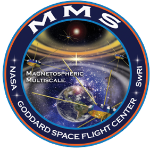Electrons are efficiently heated at Earth's quasi-perpendicular bow shock, however the interplay between adiabatic vs. non-adiabatic processes and the precise mechanisms behind non-adiabatic heating are still open questions. Using MMS observations of the bow shock, we investigate two types of adiabatic mechanisms, direct acceleration by electric fields and adiabatic compression, and show that for some shock crossings additional non-adiabatic heating is required to explain the observation. We further apply a model for magnetic pumping, a particular non-adiabatic heating mechanism. Magnetic pumping can occur when compressive magnetic fluctuations drive pressure anisotropy, which when balanced against pitch-angle scattering leads to an energy transfer from the large-scale magnetic field directly to the particles. For some shock crossings, the magnetic pumping model accounts well for the observed heating in excess of adiabatic processes.

 PDF version
PDF version
